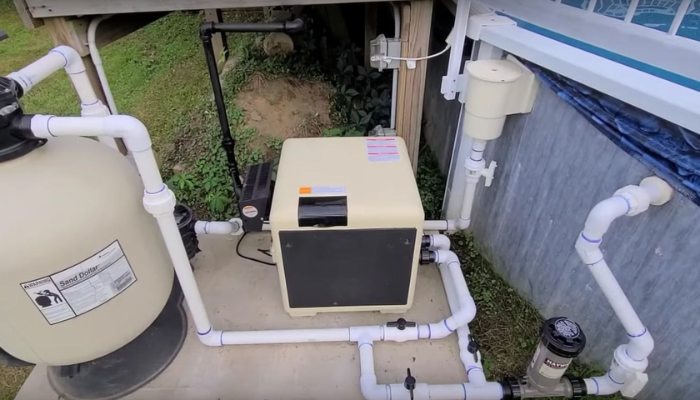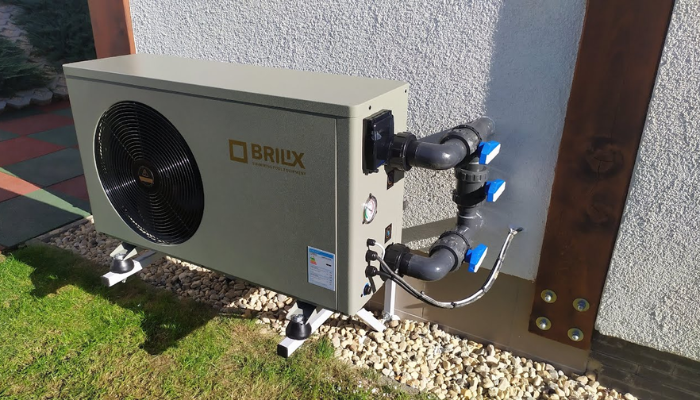When it comes to enjoying your pool throughout the year, installing a pool heater can make all the difference. Whether you have a traditional swimming pool or an above-ground pool, heating your pool allows you to swim in comfort, regardless of the weather. However, installing a pool heater is no small task—it requires planning, the right tools, and knowledge to ensure safety and efficiency. In this guide, we will walk you through everything you need to know about how to install a pool heater, from choosing the right type of heater to completing the installation process step by step.
Choosing the Right Pool Heater for Your Needs
Before diving into the installation process,how to install a pool heater it’s crucial to choose the right pool heater for your specific needs. Pool heaters come in various types, including gas heaters, electric heat pumps, and solar heaters, each with its pros and cons. Understanding the differences between these heaters will help you make an informed decision.
Gas Pool Heaters:
Gas heaters are popular due to their ability to heat your pool quickly. They are ideal for areas with cooler climates or if you want to raise your pool’s temperature rapidly for a special event. Gas heaters require a constant supply of propane or natural gas, so they can be costly to run over time.
Electric Heat Pumps:
Heat pumps work by transferring heat from the air to your pool water, making them more energy-efficient than gas heaters. They are perfect for regions with mild climates, as they are slower at heating pools than gas heaters.how to install a pool heater Though the initial investment may be higher, heat pumps can save you money in the long run due to lower operating costs.
Solar Pool Heaters:
Solar heaters are an environmentally friendly option that uses the sun’s energy to heat your pool water. While they require minimal operational costs, they depend on sunny weather and may not be effective in all climates. They also require a larger upfront investment and installation time.
Once you’ve selected the right pool heater for your situation, it’s time to move on to the installation process. Let’s look at the essential steps.
Planning the Installation Site
Proper planning is key to a successful pool heater installation. The location of your pool heater is vital for efficiency and longevity. Before beginning the installation, ensure you have a clear idea of where you want to place your heater.
Positioning the Heater:
Pool heaters should be installed near the pool’s filtration system, but they need to be placed on a level surface with proper ventilation, especially for gas heaters. If you’re installing a heat pump or solar heater, it’s crucial to ensure that there’s adequate space around the unit for air circulation. For solar heaters, you’ll also need an unobstructed area with plenty of sunlight, such as a roof or open ground.
Distance from Pool and Electrical Supply:
It’s important to position your heater within a reasonable distance of the pool’s filtration system. A shorter pipe length between the heater and the pool will reduce energy loss and improve the heater’s efficiency. Consider the location of electrical outlets if you’re installing an electric or gas heater, as well as access to gas lines for gas heaters.
Local Regulations and Codes:
Always check local building codes and regulations before installing a pool heater. Many areas have specific rules regarding the installation of pool heaters, especially when it comes to safety, permits, and plumbing connections. Consulting a professional is always a good idea if you’re unsure about these aspects.
Gathering the Tools and Materials for Installation
Having the right tools and materials on hand will make the installation process smoother and faster. Here’s a list of essential items you’ll need to install a pool heater:
- Wrenches and Pliers: For connecting plumbing and gas lines (if applicable).
- PVC Pipes and Fittings: For plumbing connections, if you’re using a gas or electric heater.
- Power Drill: For making holes in the ground or walls to secure the heater.
- Teflon Tape: For sealing pipe connections to prevent leaks.
- Leveling Tools: Ensuring the heater is properly aligned and positioned.
- Electrical Wiring and Circuit Breakers: If you’re installing an electric heat pump or gas heater, you’ll need proper electrical wiring.
For some heaters, you may also need specific components like solar panels or a heat exchanger. Make sure to refer to the manufacturer’s instructions to ensure you have everything required.
Step-by-Step Instructions for Installing Your Pool Heater

Now that you have your heater and tools ready, let’s go through the detailed process of how to install a pool heater. Here’s a step-by-step guide to help you with each phase of the installation.
Step 1: Prepare the Site
Clear the area around the installation site. For gas heaters, make sure there is adequate ventilation, as improper ventilation can lead to dangerous fumes. For solar heaters, ensure there’s direct access to sunlight. If necessary, use concrete or gravel to create a stable base for the heater.
Step 2: Install the Heater and Connect the Plumbing
Place your pool heater in its designated spot and ensure it is level. If it’s a gas heater, connect the gas line to the unit, taking care to follow safety guidelines. For heat pumps, you’ll need to connect the unit to your pool’s filtration system. Use the PVC pipes and fittings to connect the heater to the pool’s plumbing.
Step 3: Wire the Heater to the Power Source
For electric heaters, you’ll need to wire the unit to a dedicated circuit breaker. It’s recommended to hire a licensed electrician to ensure this is done safely. If you are installing a gas heater, follow the manufacturer’s instructions for electrical connections.
Step 4: Test the System
After completing the installation, it’s important to test the system. Turn on the heater and check for any leaks in the plumbing or gas lines. Run the system for a few hours to ensure it’s working properly, and monitor the temperature to verify that it’s heating the water efficiently.
Maintaining Your Pool Heater for Long-Term Performance
Once your pool heater is installed and running,how to install a pool heater it’s essential to maintain it properly for optimal performance. Regular maintenance will extend the lifespan of your heater and keep it running efficiently.
Cleaning and Inspections:
For all types of pool heaters, ensure that the filters and vents are clean and free of debris. Regularly inspect gas connections for any signs of wear or leaks, especially if you are using a gas heater.
Seasonal Checkups:
If you live in a region with freezing temperatures, consider draining your heater during the winter months to prevent damage from frozen water. This is especially important for heat pumps and gas heaters.
Professional Servicing:
Consider hiring a professional technician for annual inspections and servicing. This ensures that any potential issues are caught early and prevents costly repairs down the line.
Conclusion
Installing a pool heater can significantly improve your swimming experience,how to install a pool heater especially during colder months. Whether you opt for a gas, electric, or solar pool heater, the installation process involves careful planning, the right equipment, and adherence to safety guidelines. By following the steps outlined in this guide, you’ll be able to install your pool heater efficiently and enjoy warm water throughout the year. Always remember to maintain your heater regularly to ensure long-term, trouble-free operation.
Frequently Asked Questions (FAQs)
- How much does it cost to install a pool heater? The cost varies depending on the type of heater,how to install a pool heater size of the pool, and complexity of the installation. Gas heaters can cost between $2,000 and $4,000, while heat pumps can range from $3,000 to $6,000. Solar heaters have a higher upfront cost but lower operational costs.
- Can I install a pool heater myself? While it is possible to install a pool heater yourself, we recommend hiring a professional if you are not familiar with electrical work or plumbing. Incorrect installation can lead to safety risks or inefficient heating.
- How long does a pool heater last? On average, pool heaters last between 5 to 15 years,how to install a pool heater depending on the type and how well they are maintained.
- Are pool heaters energy-efficient? Electric heat pumps are the most energy-efficient option for heating pools. Gas heaters are less efficient and cost more to operate.
- Can a pool heater work in cold climates? Yes,how to install a pool heater but you may need to choose a gas heater or an efficient electric heat pump if you live in a region with very low temperatures.
- How long does it take for a pool heater to heat the pool? Gas heaters heat a pool quickly, usually within a few hours. Heat pumps take longer, typically 24–48 hours, depending on the size of the pool.
- Do I need a permit to install a pool heater? In many areas, you will need a permit to install a pool heater.how to install a pool heater Always check with your local building department before starting installation.
- Can I install a solar pool heater on my roof? Yes, solar heaters are often installed on rooftops, provided the area receives plenty of sunlight and can support the weight of the panels.
- Is it worth installing a pool heater? If you plan to use your pool year-round or during cooler months, a pool heater can significantly extend your swimming season and improve comfort.
- Can a pool heater be repaired if it stops working? Yes, pool heaters can often be repaired.how to install a pool heater Contact a professional technician to diagnose the issue and perform the necessary repairs.





